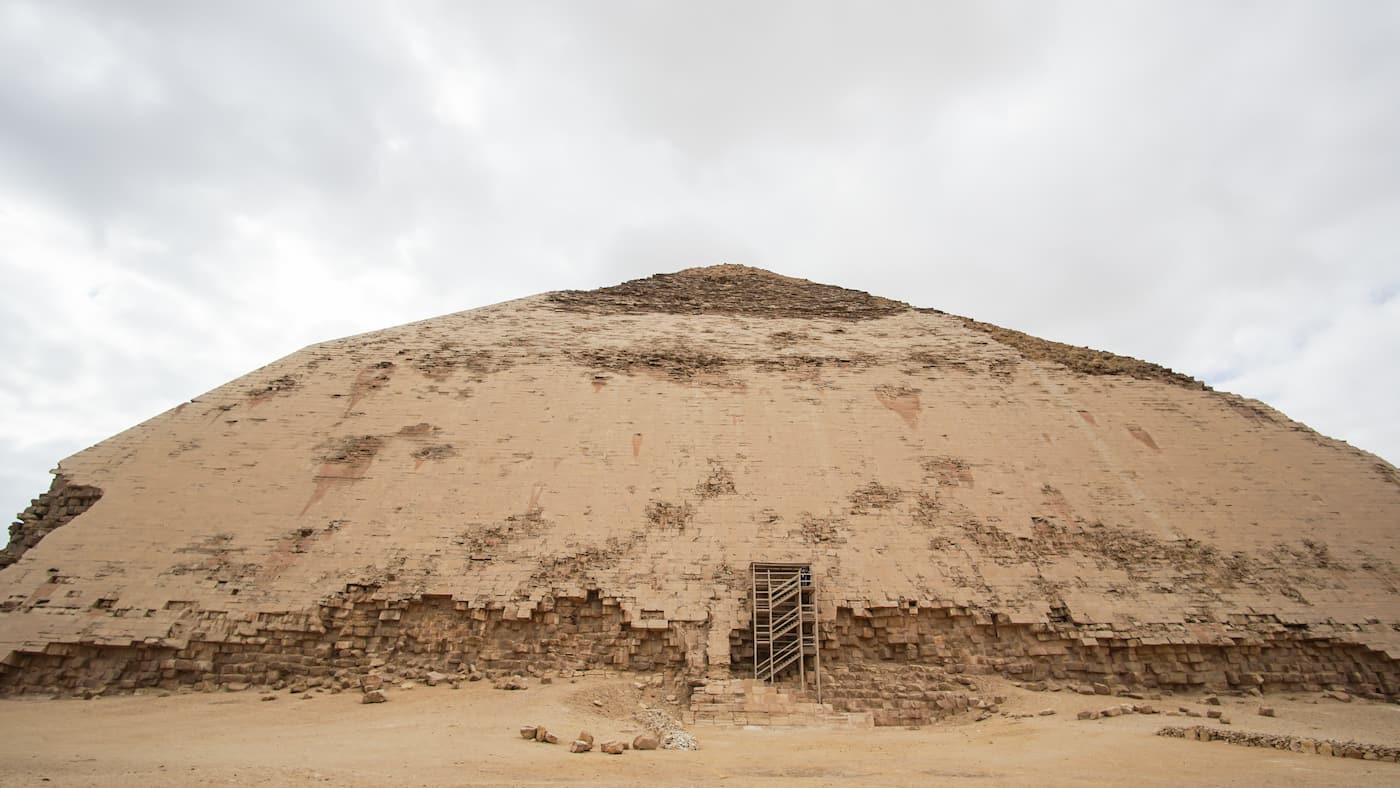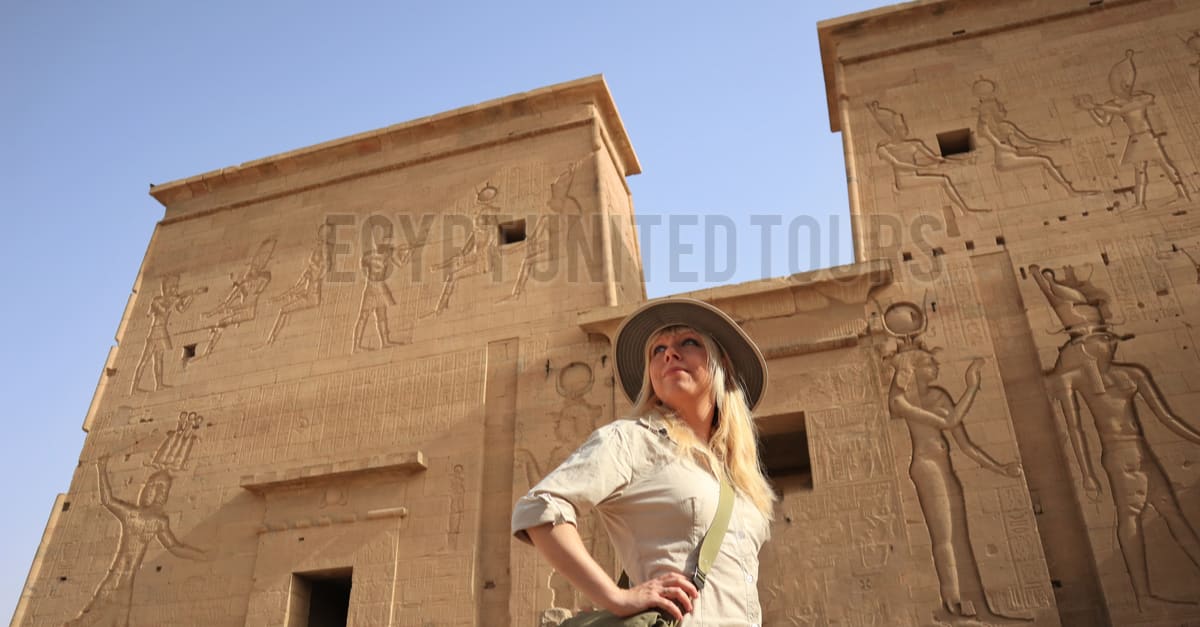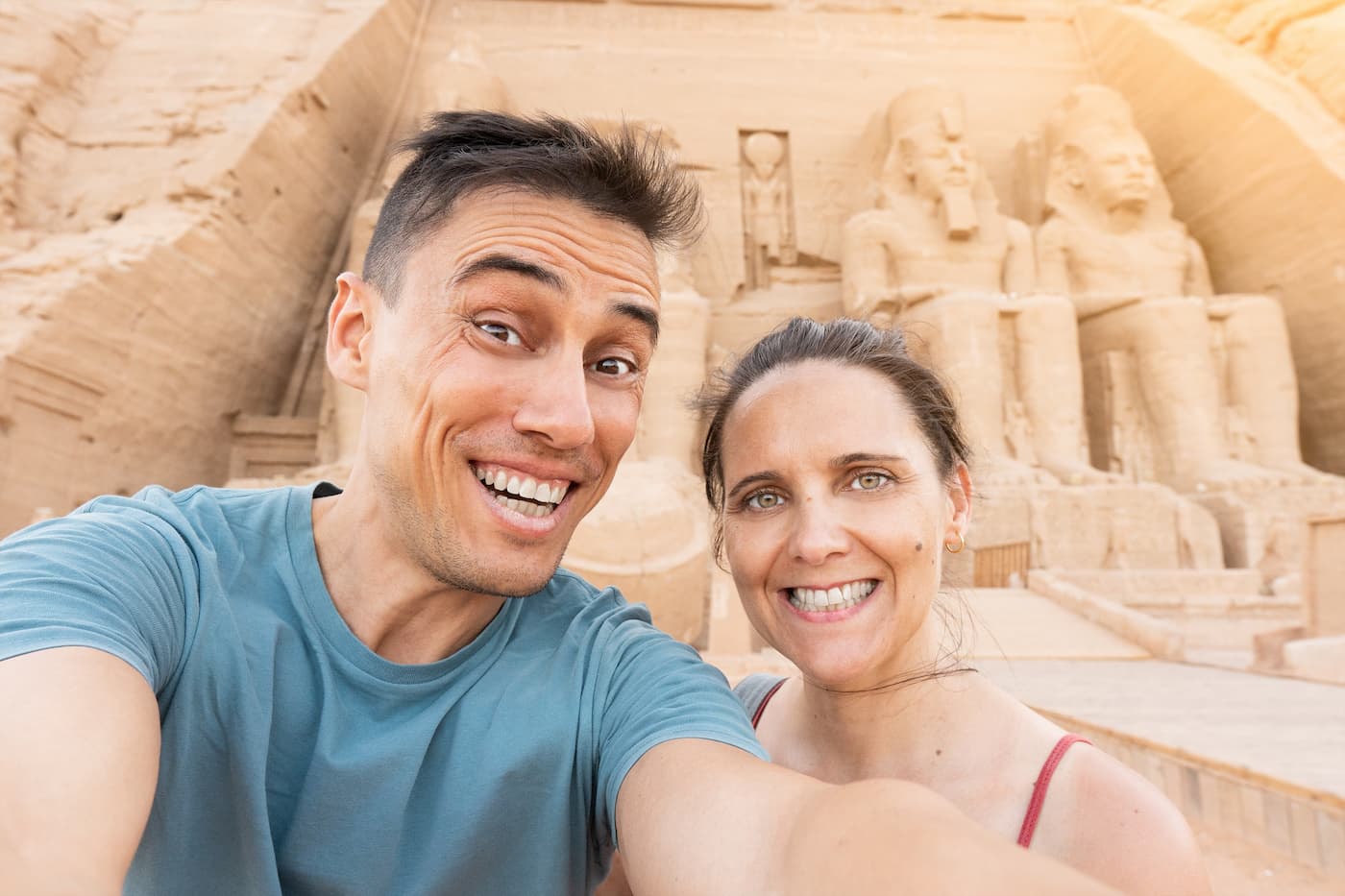Sneferu: The First Pharaoh Of the 4th Dynasty And The First Designer of The Pyramids
Sneferu or Soris was an ancient Egyptian monarch and the first pharaoh of the Fourth Dynasty of Egypt, during the earlier half of the Old Kingdom period (26th century BC). He designed and built wonderful pyramids, and at least three of his pyramids exist to this day.
His reign period was from around 2613 to 2589 Bc. Thus, he ruled for almost 24 years. While others suggest a 30 or 48-year reign. In his reign, there were many advancements in pyramid construction. He changed the shape of pyramids from step pyramids to smooth-sided ones. Thus, he established the architectural style for which Ancient Egypt is widely recognized.
What Does The Name Sneferu Mean?
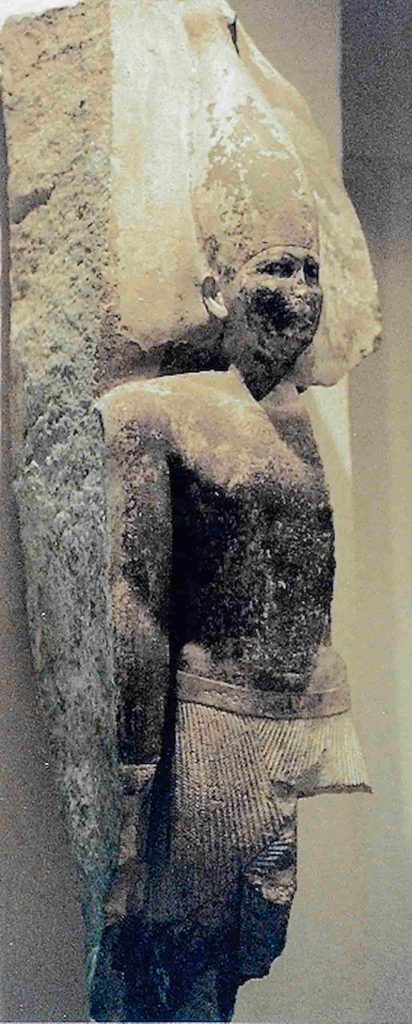
King Sneferu
His name means “He has perfected me”, derived from the phrase “Horus, Lord of Maat, has perfected me.”
It is also sometimes read Snefru or Snofru. He is also known under his Hellenized name Soris. This reflects the divine association of Egyptians and their pharaohs.
Sneferu’s name has meanings like harmony and perfection, which were essential for their king. Because the king was responsible for saving Maat, which means truth, balance, and order in the land.
His Greek name was Soris. He played an important role in advancing pyramid construction, setting the stage for monumental projects like his son Khufu’s Great Pyramid.
Sneferu’s Regin
Egyptologists differed always the length of Sneferu’s reign. Ancient records, including the Turin Canon, suggest that Sneferu ruled for 24 years, but this is now regarded as an underestimate. Inscriptions found at the Red Pyramid in Dahshur reference a 24th cattle count, which indicates a minimum reign of 24 years.
Additional records, however, suggest that Sneferu conducted cattle counts every two years rather than annually. This means that Sneferu’s rule could have extended closer to 27 or even 30 years. Most historians believe his reign lasted at least 30 years, given the immense scale of his building projects, though some sources speculate a longer reign of up to 48 years.
Senefru Family
It is quite fascinating that the mention of the ancient Egyptian eras from the 18th and 19th centuries BC somehow leads you to Snofru, the first monarch of the 4th Dynasty; moreover, one should add, he oversaw the country for a whopping period of 24 years (from 2613 to 2589). Manetho, an Egyptian priest of the 5th century BC or 3rd century BC, should help in easing this burden.
He has made an attempt to organize the known pharaohs of Ancient Egypt into a set of thirty-one dynasties. Even though his categorization has several problems, his basic logic has actually been followed by scholars even in the modern era. The one source available to us that supports this claim is The Papyrus Prisse. It dates back to the Middle Kingdom.
And the fact that King Huni was the predecessor of Sneferu. It is not clear who Huni was to Sneferu. But some propositions include the lady as the mother of the boy, the lady in question being identified as Meresankh in the Cairo Annals Stone.
How many children did Sneferu have?
Senefru had many sons and daughters. He had 8 sons:
Sneferu’s Sons
1- Khufu was the son of Sneferu and Hetepheres I, successor to Sneferu.
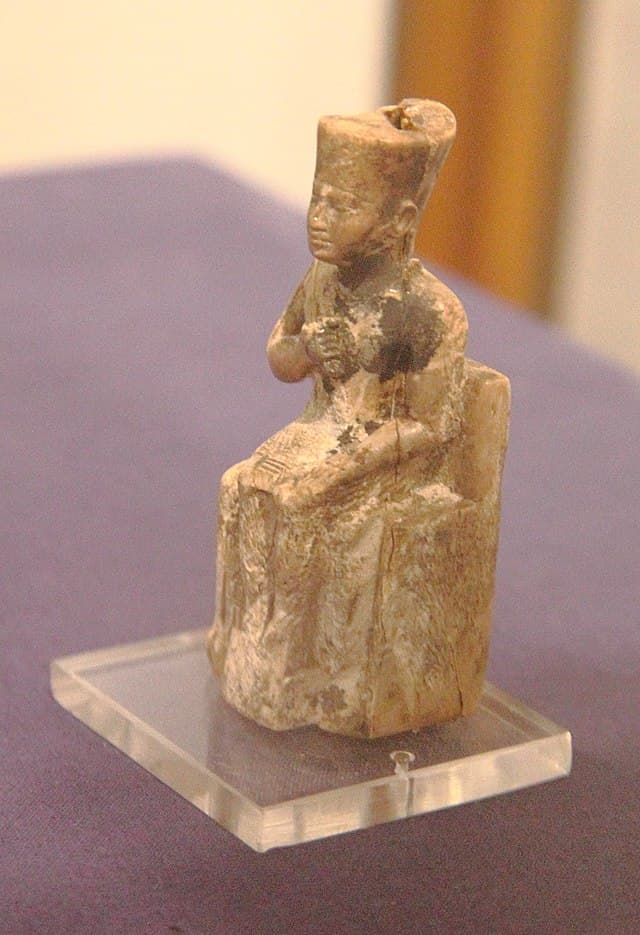
2- Ankhhaf was the King’s Son of his Body, the King’s vizier. There was a famous bust of Ankhhaf that is now in the Boston Museum of Fine Arts. His wife was the King’s Daughter, Hetepheres.
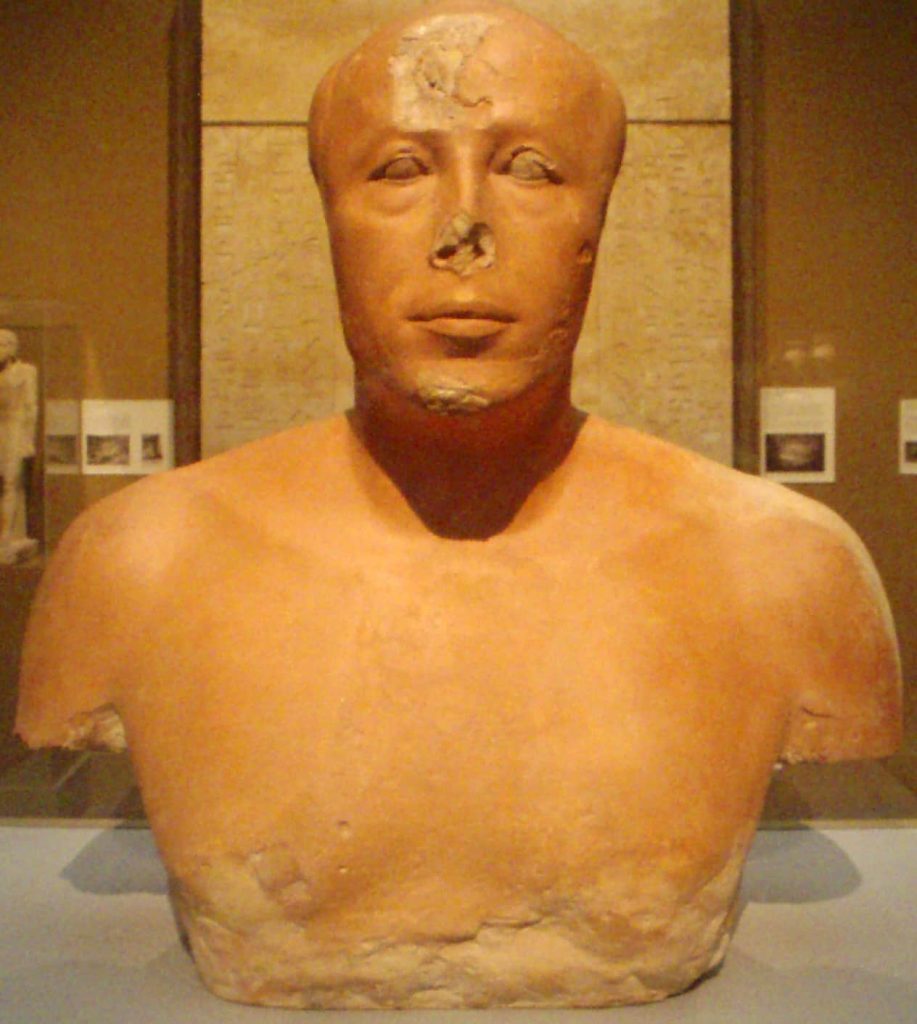
Prince Ankhhaf
3- Kanefer was the King’s eldest son and Son of his Body. Buried in tomb 28 in Dashur. He was the Second Vizier of Sneferu, who continued to serve under Khufu.
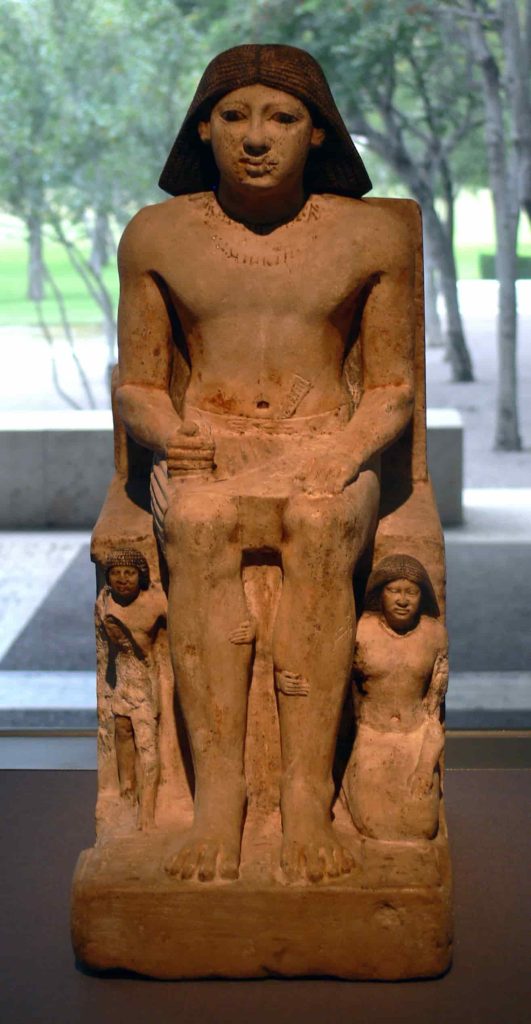
Kanefer and his family
4- Nefermaat I was the eldest son of Sneferu and husband of Itet. He had another name, like Priest of Bastet, Hereditary Prince, Guardian of Nekhen. He was one of the five at the house of Thoth and the First Vizier of Sneferu.
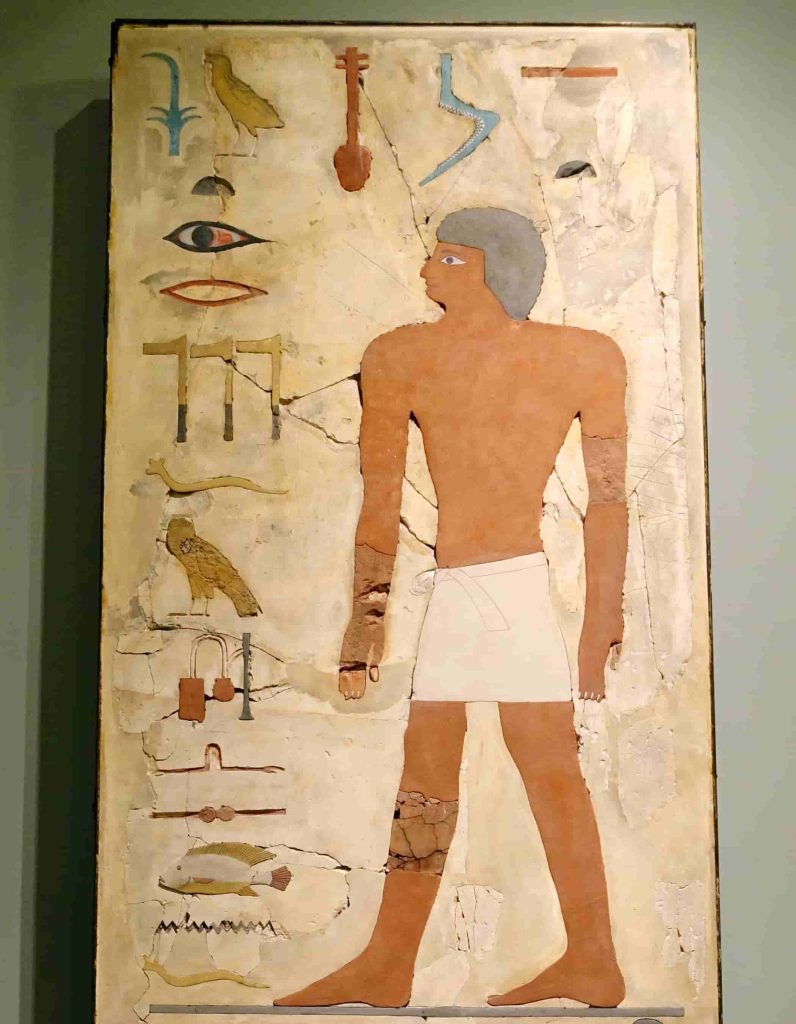
Nefermaat I
5- Netjeraperef, buried in Dashur.
6- Rahotep was the King’s Son of his Body and High Priest of Re in Heliopolis. Buried in Meidum with his wife Nofret. He was the owner of the famous statues that exist now in the Cairo Museum.
7- Ranefer. Buried in Meidum.
8- Iynefer I. Buried in Dashur.
Sneferu’s daughters
Senefru also had 4 daughters:
1- Hetepheres married Ankhhaf and had the same name as her mother, Queen Hetepheres.
2- Nefertkau I was the King’s Daughter of his Body, and the eldest daughter of Sneferu. Buried in mastaba G 7050 at Giza. Her tomb dates to the time of Khafra.
3- Nefertnesu was the King’s daughter and the God’s Daughter. She had a son named Kaemqed. He was buried in Dashur during the 5th dynasty.
4- Henutsen was the King’s daughter and married to Khufu.
Senefru Achievements
The most well-known monuments from Sneferu’s reign are the three pyramids. People thought that Senefru built them. In Dahshur: the Bent Pyramid and the Red Pyramid, and the Meidum, the Meidum Pyramid. Under Sneferu, there was a major evolution in monumental pyramid structures. That led to the building of Khufu’s Great Pyramid, which was of the Egyptian Old Kingdom’s majesty and splendour, and as one of the Seven Wonders of the Ancient World.
The Pyramid at Meidum
Although it was the first of Sneferu’s great projects. There is some debate among scholars as to Sneferu’s claim to the Meidum pyramid, and many say that its origin is to King Huni. The pyramid is a remarkable example of the progression of technology and ideology in the king’s burial site.
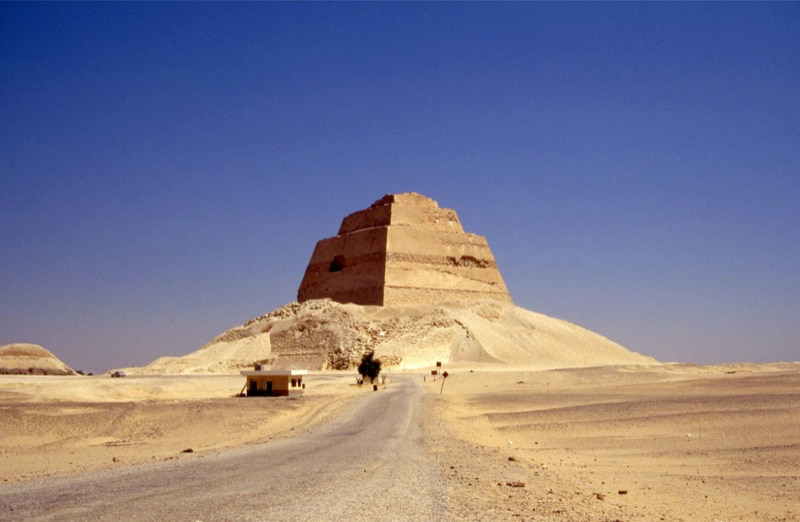
Sneferu built the Meidum Pyramid
The immense stone structure serves as an important testimony to the transition from the stepped pyramid structure to that of a “true” pyramid structure. Archaeological investigations of the pyramid show that it was a seven-stepped structure, built similarly to the Djoser complex at Saqqara.
This pyramid contained a descending northern passage, two underground chambers, and a burial vault. The pyramid mainly follows the conventions of previous tombs in most aspects, other than one: instead of being situated under the colossal structure, the burial chamber is built directly within the main body. It was very near ground level.
The Bent Pyramid at Dahshur

The Bent in Dahshur, Egypt
The pyramid had a huge volume of the monument (1.5 million m³). It is the largest pyramid until now. The Bent Pyramid, also known as the Rhomboidal or Blunted Pyramid. It was of architectural innovation. They didn’t design this pyramid initially in this way, but they modified it during construction due to unstable accretion layers. This took three construction phases to stabilize the pyramid. As a means of stabilising the structure, the top layers were laid horizontally, marking the abandonment of the step pyramid concept.
The internal components of the Rhomboidal pyramid have also evolved. Thus, there are two entrances, one from the north and another from the west. The subterranean chambers are much larger, with corbel walls and ceilings with more complex diagonal portcullis systems in place.
Egypt decided to open the Bent Pyramid for tourism in July 2019 for the first time since 1965. Tourists will be able to reach two 4600-year-old chambers through a 79-meter narrow tunnel built from the northern entrance of the pyramid. 18-meter-high “side pyramid”, which was for Sneferu’s wife Hetepheres, will also be accessible. It is the first time this adjacent pyramid has opened to the public after its excavation in 1956.
The Red Pyramid at Dahshur
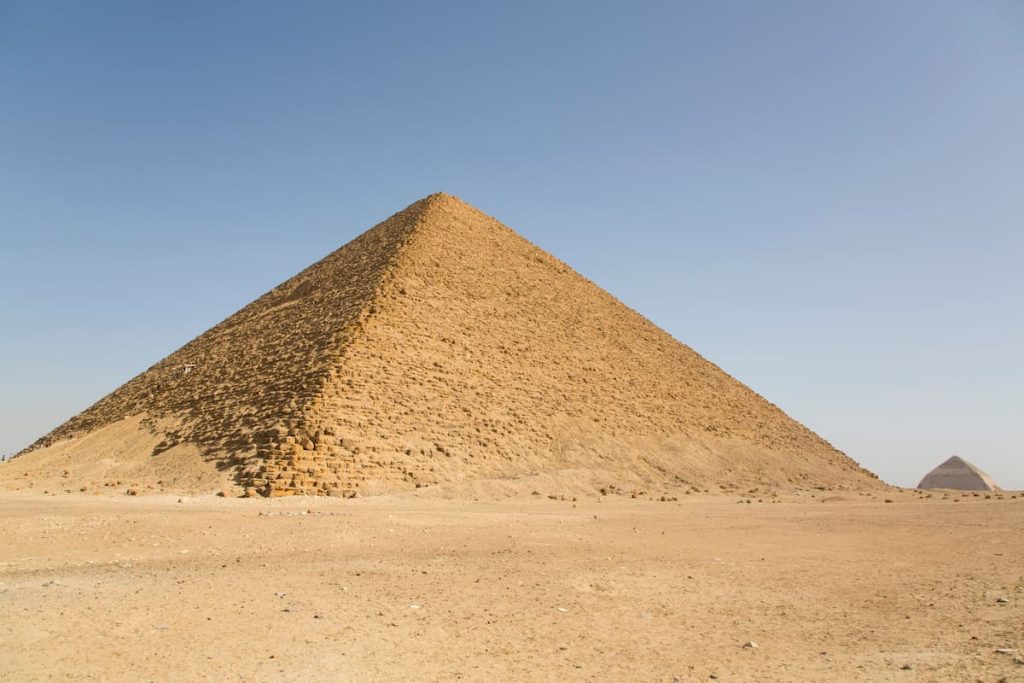
Sneferu built the Red Pyramid, with Bent Pyramid
Despite being Sneferu’s final pyramid, the Red Pyramid has a simpler design compared to its predecessor, with some of the earlier internal innovations missing. Although the chambers and burial vaults are all present in the monument’s main body, no ascending passageway exists. There is no evidence of a western entrance or diagonal portcullis. Although the absence of these features has stopped many archaeologists from studying the Red Pyramid, Lepre said that secret chambers are waiting to be uncovered within the stone superstructure.
People have not yet found the remains of King Sneferu or positively identified them; it still may be possible that his sarcophagus and actual mummy lie hidden in his Red Pyramid in a hidden chamber. Lepre claims: “The Red pyramid remains one of the chief pyramids that may contain secret chambers, which may be the true burial chamber of King Sneferu himself.”
Sneferu’s Effects on Egyptian Society and Culture
As time passed and ideology changed in Ancient Egypt, the monuments of the kings greatly decreased in size. While the Pyramid of Menkaure is but a fraction of the size of the previous pyramids, perhaps the focus of Egyptian thought might have shifted from worship of the king to that of the sun-god Ra.
Not only was Sneferu successful in the construction of his pyramids, but he also developed Egyptian society and its ideology. His reign explains the King as Divine, representing the balance necessary for the prosperity of Egypt. Sneferu set a powerful example for future pharaohs. Because he established the boundaries of architecture and Egypt as a regional power
Senefru Foreign relations
To enable Sneferu to do such massive building projects, he would have had to secure an extensive store of labour and materials. Thus, the king’s foreign policy played a large part. As Sneferu’s conquests into Libya and Nubia served two purposes: the first goal was to establish an extensive labour force, and the second goal was to gain access to the raw materials and special products that were available in these countries.
Conclusion
Overall, Sneferu was an intriguing ruler who led his country through military strength, innovations in architecture, and a significant cultural effective. Thusly, his legacy is recorded in Sneferu’s great pyramids, the stability in Egypt, and Dynasty One. All of these developments rank among the most popular monuments in world history. He affected Egyptians’ existence by making them more creative in the building of pyramids and treaty-making with foreign lands.

